Types of Inflorescence
There are several main types of inflorescence, including:
- Racemose Inflorescence: In this type, the main axis continues to grow and produces flowers along its sides. Examples include the simple raceme, panicle, and spike.
- Cymose Inflorescence: Here, the main axis terminates in a flower and the lateral branches also terminate in flowers. Examples include the cyme, umbel, and corymb.
- Compound Inflorescence: This type is a combination of racemose and cymose inflorescences, characterized by the presence of both types of branching in the same inflorescence. Examples include the compound raceme and compound umbel.
Functions of Inflorescence
The inflorescence serves several important functions in plant reproduction:
- Reproduction: The primary function of the inflorescence is to produce and support flowers, which are the reproductive structures of the plant.
- Attracting Pollinators: The structure and arrangement of the inflorescence can help attract pollinators such as bees, butterflies, and birds, which are essential for pollination and fertilization of the flowers.
- Seed Dispersal: After fertilization, the inflorescence also plays a role in seed development and dispersal, ensuring the spread and continuation of the plant species.
Study Guide for Inflorescence
When studying inflorescence, consider the following key points:
- Learn to identify and differentiate between the main types of inflorescence, including racemose, cymose, and compound inflorescences.
- Understand the specific characteristics and examples of each type of inflorescence to recognize them in plant specimens.
- Explore the functions of inflorescence in plant reproduction and the ecological significance of different inflorescence types.
- Study the role of inflorescence in attracting pollinators and facilitating seed dispersal to understand its importance in the plant life cycle.
◂Science Worksheets and Study Guides Seventh Grade. Protists and Fungi
Study Guide Protists and Fungi
Protists and Fungi  Worksheet/Answer key
Worksheet/Answer key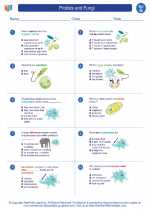 Protists and Fungi
Protists and Fungi  Worksheet/Answer key
Worksheet/Answer key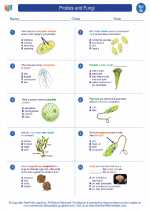 Protists and Fungi
Protists and Fungi  Worksheet/Answer key
Worksheet/Answer key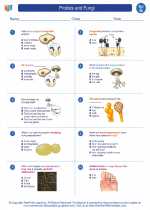 Protists and Fungi
Protists and Fungi  Worksheet/Answer key
Worksheet/Answer key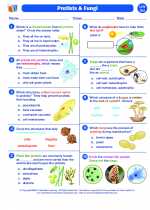 Protists and Fungi
Protists and Fungi  Vocabulary/Answer key
Vocabulary/Answer key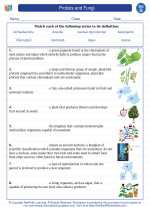 Protists and Fungi
Protists and Fungi  Vocabulary/Answer key
Vocabulary/Answer key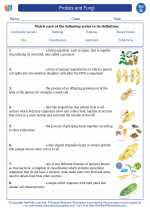 Protists and Fungi
Protists and Fungi  Vocabulary/Answer key
Vocabulary/Answer key Protists and Fungi
Protists and Fungi  Vocabulary/Answer key
Vocabulary/Answer key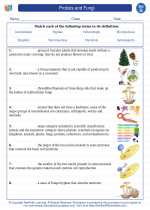 Protists and Fungi
Protists and Fungi  Vocabulary/Answer key
Vocabulary/Answer key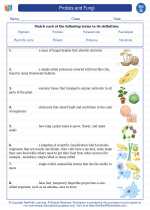 Protists and Fungi
Protists and Fungi  Vocabulary/Answer key
Vocabulary/Answer key Protists and Fungi
Protists and Fungi 

 Worksheet/Answer key
Worksheet/Answer key
 Worksheet/Answer key
Worksheet/Answer key
 Worksheet/Answer key
Worksheet/Answer key
 Worksheet/Answer key
Worksheet/Answer key
 Vocabulary/Answer key
Vocabulary/Answer key
 Vocabulary/Answer key
Vocabulary/Answer key
 Vocabulary/Answer key
Vocabulary/Answer key
 Vocabulary/Answer key
Vocabulary/Answer key
 Vocabulary/Answer key
Vocabulary/Answer key
 Vocabulary/Answer key
Vocabulary/Answer key

The resources above cover the following skills:
LIFE SCIENCE
Ecosystems: Interactions, Energy, and Dynamics
Construct an explanation to predict patterns of interactions in different ecosystems in terms of the relationships between and among organisms (e.g., competition, predation, mutualism, commensalism, parasitism).